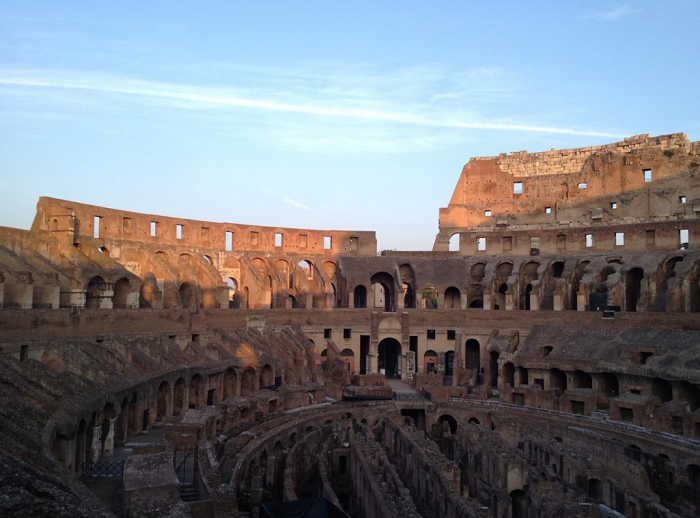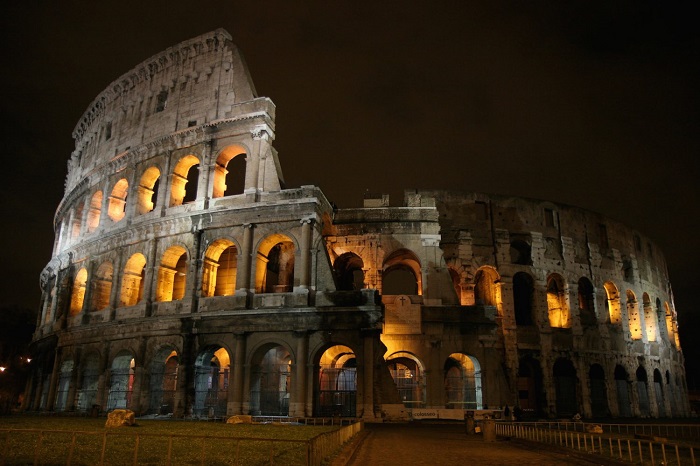ISABEL RUBIO ARROYO | Tungsteno
As well as being the setting for some of the bloodiest gladiator fights in history, the Roman Colosseum has also hosted battles between hippopotamuses, rhinoceroses, bears, lions, elephants and bulls. This architectural marvel, with a seating capacity for some 50,000 spectators on 80 rows of bleachers, has been standing for almost two millennia. Having investigated how the Egyptians built the Great Pyramid of Giza, the tallest man-made structure on the planet for almost four millennia, we turn to examining how the largest amphitheatre on the planet was constructed.
Considered one of the New Seven Wonders of the Modern World, the Colosseum was built between 70 AD and 80 AD under Emperors Vespasian, Titus and Domitian, the emperors of the Flavian dynasty, hence its original name: the Flavian Amphitheatre. On the site chosen for its construction, in the centre of Rome, Emperor Nero had previously created an artificial lake, which had to be drained into the River Tiber before construction could begin.
Trapdoors, lifts and a basement with dungeons
Unlike previous amphitheatres that were usually dug into hillsides for additional support, the Colosseum is a free-standing structure. This huge oval building was 188 metres long, 156 metres wide and 57 metres high. Approximately 100,000 cubic metres of travertine marble (a type of limestone quarried near ancient Tibur), as well as Roman cement, bricks and blocks of tufa were used for its construction. Some 300 tons of iron clamps were also used to bind the large blocks together, leaving large marks still visible on the walls of the building.
The Romans wanted to show off their advanced engineering techniques to the whole world. "The period of execution was extraordinarily short," says architectural restoration expert Giovanni Manieri Elia. Much of the work, he says, was managed off-site, probably in the quarries where the material was extracted and cut. For example, the travertine and tufa blocks arrived on site already squared. The Coliseum was also built using prefabricated elements that allowed for modular construction. The design was "geometrically regular, repetitive and with few exceptions": "All the steps of the stairs, for example, had the same measurements, as did the marble seats for the spectators, which all had the same dimension of 57 centimetres each."
The stands were divided into several zones, each of which was intended for a different social class. While the emperor and senators were near the arena, the lower strata of society were seated higher up. Below ground, there was a network of tunnels through which the Romans moved with torches and oil lamps, and dungeons to house the gladiators and animals. The floor also had several trap doors and elevators that could be used during the shows.

To erect the Colosseum, some prefabricated elements were used to enable a modular construction. Credit: Colosseum Archaeological Park.
The roar of lions, the clash of swords and naval battles
Such was the excitement surrounding the construction of the Colosseum that the lavish inaugural games in 80 AD lasted for more than one hundred days. For almost 500 years, the inhabitants of Rome flocked to this megastructure to watch gladiatorial duels, animal fights, chariot races, parades of exotic animals, musical performances and public executions. The clamour of the spectators mingled with the roars of lions and the clanging of metal weapons. The spectacle was over the top. During the inaugural games alone, according to the Roman historian Dio Cassius, dozens of gladiators and 9,000 animals, both trained and wild, were killed.
Sometimes the arena was submerged in water for mock naval battles called naumachia. "The Colosseum was intended to be a symbol of Rome’s power in the ancient world, and what better way to display that power than a body of water that could drain and refill at the Emperor's command," explains researcher Janelle Peters. How the Romans flooded the arena to create the aquatic effect is "still a mystery."
Some historians believe that a huge aqueduct was diverted into the arena. Others think that the system of chambers and sluice gates used to drain the arena was also used to fill it. These chambers could have been filled with water before the event and opened to flood the arena with more than a million gallons of water, creating a depth of 1.5 metres, according to Peters. But even with all that water, the miniature boats would have required special flat bottoms so as not to scrape the Colosseum floor. A paper published in the journal Civil Engineering indicates that the central arena could have been filled in two to five hours and drained again in a similar time scale.
The Colosseum was filled with water to become the scene of staged naval battles. Credit: TED-Ed
A two thousand-year-old structure that has survived fires and earthquakes
Both the Colosseum and the spectacles presented there underwent some changes over the years. "The transformations often followed the tastes of the various emperors," says Alfonsina Russo, director of the Colosseum Archaeological Park. Eventually, the amphitheatre ceased to be used for entertainment in the Early Middle Ages. During the following centuries it was used for many other purposes, such as a church, a fortress, a factory or a quarry. Its stones were used, for example, in the construction of St. Peter's Basilica.
Over the years, the Colosseum suffered from fires, earthquakes and other natural disasters. For example, in 217 it was damaged by an electrical storm and in 1349 a major earthquake destroyed part of the structure. Despite these mishaps, it still stands today. In the 19th century, several stabilisation and restoration projects were carried out for the preservation of the structure, which also suffered damage during the Second World War. This architectural treasure, which receives more than six million visitors every year, is the most visited monument in Italy.
· — —
Tungsteno is a journalism laboratory to scan the essence of innovation. Devised by Materia Publicaciones Científicas for Sacyr’s blog.
